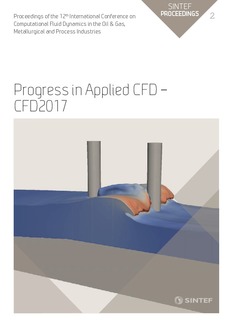| dc.description.abstract | Bubbly flows are central to many processes in the minerals extraction and metal production industries, mainly because they enhance heat and mass transfer rates. These transfer rates depend on the turbulence level in the multiphase flow. Bubbles rising in a liquid give rise to an additional component of turbulence in the continuous phase, known as bubble-induced turbulence. Various models have been proposed in the literature to account for this mechanism in two-fluid Reynoldsaveraged (RANS) simulations of bubbly flow, but there is considerable uncertainty about the form of terms that should be added to account for the effect, and even the flow physics underlying the phenomenon is poorly understood. Simulations are carried out of flow around a simplified bubble arrangement in order to clarify this flow physics, to allow a consistent definition of bubble-induced turbulence, and to point the way to a reliable determination of the source terms. It is argued that a component of the fluctuations due to flow around bubbles should not be considered to be turbulence since the energy of these fluctuations is actually recoverable. This fact seriously complicates efforts to obtain bubble-induced turbulence from experimental velocity measurements or direct numerical simulations. Simulations of flow around a bubble using the SST turbulence model allow the prediction of the source of actual bubble-induced turbulence for a single isolated rather than the pseudo-turbulence related to bubble motion. The source of actual turbulence for an isolated bubble of diameter 5 mm with a mobile interface is predicted to be very small, while for an immobile interface, a finite source is distributed in the wake of the bubble. The source of “bubble-induced” turbulence for a bubble swarm is a more complex issue, but the present simulations can give insights and point the way forward to a more complete formulation. | nb_NO |
